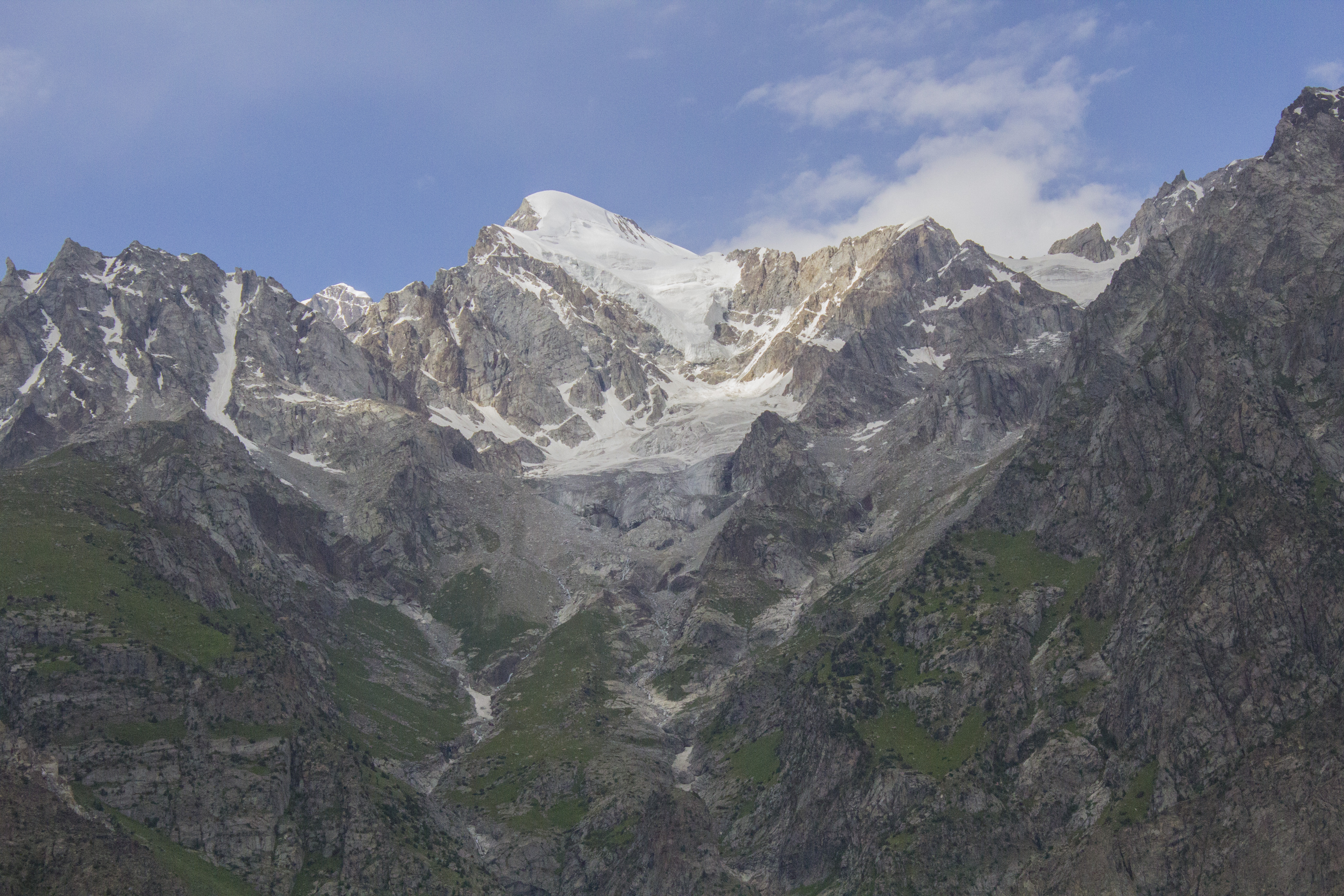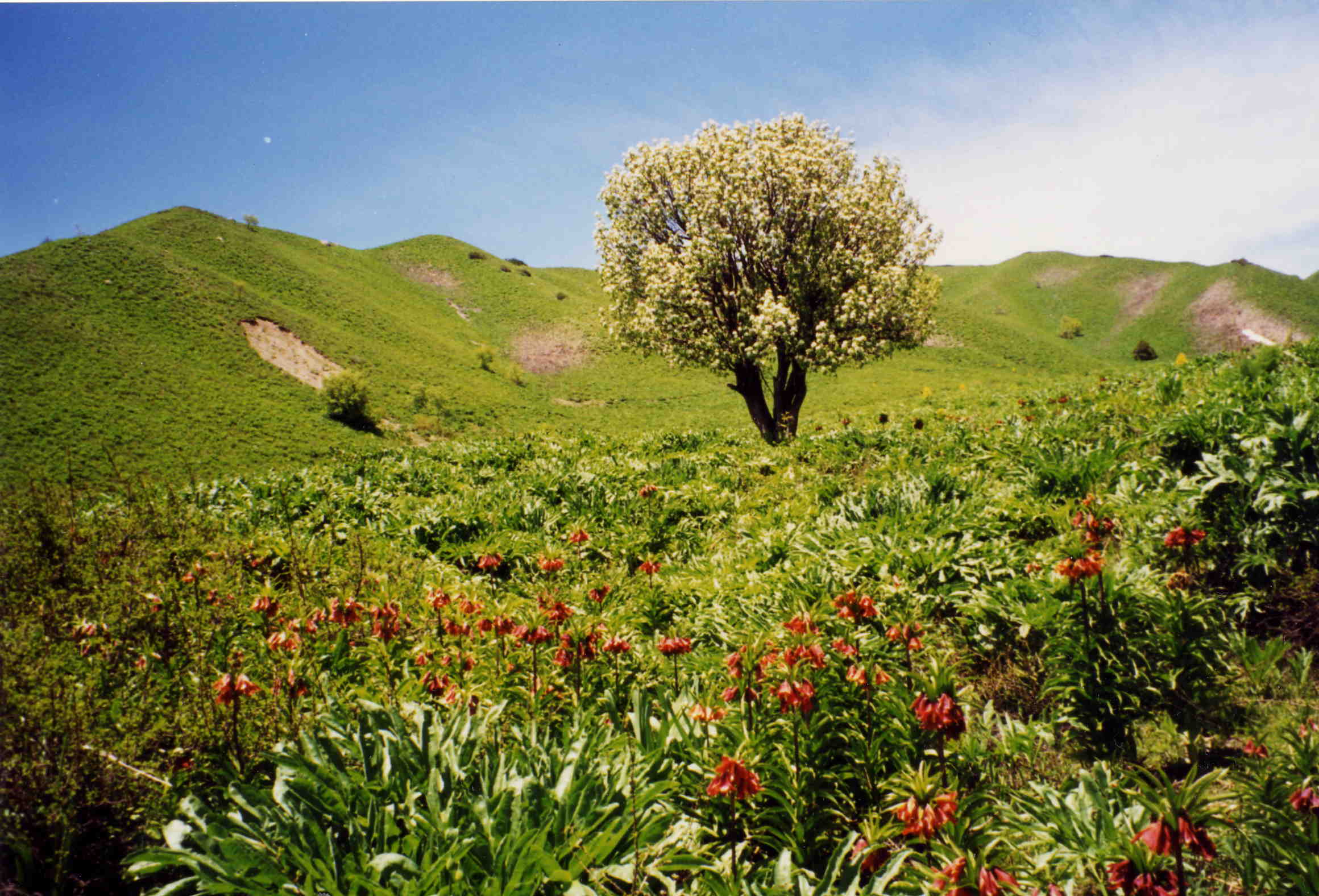|
Pakkora
Pakkora is a village of the Ishkoman valley in Pakistan. It is located 95 km north west of Gilgit city. The village has a population of around 3,500 inhabitants, according to the 1998 census. Geography Pakkora is connected to the Hunza Valley via the Naltar pass from its northeastern side while annexed to the Pamir mountain range to the northwest. The village is sandwiched between the Hindukush and the great Karakorum mountain ranges. It has a diverse weather pattern. The climate remains moderate all year round. Culture and economy Khowar, Shina, Burushaski, Gujri and Wakhi are the lingua franca of Pakkora. As much as 60% of this village is educated. There is one Inter college and two high schools. The main source of income is cultivation of wheat, corn, potatoes, and fruit. Bread and butter are sustained by the gemstones A gemstone (also called a fine gem, jewel, precious stone, semiprecious stone, or simply gem) is a piece of mineral crystal which, when cut or po ... [...More Info...] [...Related Items...] OR: [Wikipedia] [Google] [Baidu] |
Ishkoman
The Ishkoman () valley lies in the north of Ghizer District in Gilgit-Baltistan, Pakistan. It borders Afghanistan Afghanistan, officially the Islamic Emirate of Afghanistan, is a landlocked country located at the crossroads of Central Asia and South Asia. It is bordered by Pakistan to the Durand Line, east and south, Iran to the Afghanistan–Iran borde ... and the Pamir Wakhan Corridor. Its altitude ranges from 7,000 to 12,000 feet (2,100 to 3,700 m) above sea level. The languages spoken here include Shina,Khowar,Brushaski and Wakhi. See also * Chatorkhand * Pakkora * Shahchoi Pass * Khora Bhurt Pass References {{reflist Ghizer District Valleys of Gilgit-Baltistan Pamir Mountains ... [...More Info...] [...Related Items...] OR: [Wikipedia] [Google] [Baidu] |
Pakistan
Pakistan, officially the Islamic Republic of Pakistan, is a country in South Asia. It is the List of countries and dependencies by population, fifth-most populous country, with a population of over 241.5 million, having the Islam by country#Countries, second-largest Muslim population as of 2023. Islamabad is the nation's capital, while Karachi is List of cities in Pakistan by population, its largest city and financial centre. Pakistan is the List of countries and dependencies by area, 33rd-largest country by area. Bounded by the Arabian Sea on the south, the Gulf of Oman on the southwest, and the Sir Creek on the southeast, it shares land borders with India to the east; Afghanistan to the west; Iran to the southwest; and China to the northeast. It shares a maritime border with Oman in the Gulf of Oman, and is separated from Tajikistan in the northwest by Afghanistan's narrow Wakhan Corridor. Pakistan is the site of History of Pakistan, several ancient cultures, including the ... [...More Info...] [...Related Items...] OR: [Wikipedia] [Google] [Baidu] |
Gilgit
Gilgit (; Shina language, Shina: ; ) is a city in Pakistani-administered Gilgit-Baltistan, Gilgit–Baltistan in the disputed Kashmir region.The application of the term "administered" to the various regions of Kashmir and a mention of the Kashmir dispute is supported by the WP:TERTIARY, tertiary sources (a) through (d), reflecting WP:DUE, due weight in the coverage. Although "controlled" and "held" are also applied neutrally to the names of the disputants or to the regions administered by them, as evidenced in sources (f) through (h) below, "held" is also considered politicized usage, as is the term "occupied," (see (i) below). (a) (subscription required) Quote: "Kashmir, region of the northwestern Indian subcontinent ... has been the subject of dispute between India and Pakistan since the partition of the Indian subcontinent in 1947. The northern and western portions are administered by Pakistan and comprise three areas: Azad Kashmir, Gilgit, and Baltistan, the last two bei ... [...More Info...] [...Related Items...] OR: [Wikipedia] [Google] [Baidu] |
Hunza Valley
The Hunza Valley (; ) is a mountainous valley located in the northern region of the Gilgit-Baltistan, Pakistan. Geography The valley stretches along the Hunza River and shares borders with Ishkoman Valley, Ishkoman to the northwest, Shigar Valley, Shigar to the southeast, Afghanistan's Wakhan Corridor to the north, and China's Xinjiang, Xinjiang region to the northeast. The valley floor sits at an elevation of 2,438 meters (7,999 feet). Geographically, the Hunza Valley is divided into three parts: Upper Hunza (Gojal), Central Hunza, and Lower Hunza (Shinaki). History Buddhism and, to a lesser extent, Bön were the primary religions in the area. The region holds several surviving Buddhist archaeological sites, such as the Sacred Rock of Hunza. Hunza Valley was central in the network of trading routes connecting Central Asia to the subcontinent. It also provided protection to Buddhist missionaries and monks visiting the subcontinent, and the region played a significant role ... [...More Info...] [...Related Items...] OR: [Wikipedia] [Google] [Baidu] |
Naltar Valley
The Naltar Valley is a valley situated about from the city of Gilgit in Gilgit-Baltistan, Pakistan. It is a forested area distinguished by its three lakes, Strangi Lake, Blue Lake, and Bodlok Lake, as well as by the mountainous landscape. Geography The Naltar Valley is situated near the city of Gilgit, with the settlements of Naltar Bala (upper) and Naltar Paain (lower) in the valley about and from Gilgit, respectively. The Naltar Expressway connects Naltar with Gilgit via Nomal and Faizabad. A road from Nomal goes through the 'Silk Route' to China. Naltar Hydropower Projects (I, II, IV) In addition to the existing three smaller hydropower generating facilities (Naltar I, II, and IV, totaling 3.02 MW), the government built an 18 MW hydropower plant, known as Naltar Hydropower Plant-IV, close to Naltar Pine to meet the region's energy needs. It has been in operation since October 2007. The 16 MW and 14 MW Naltar-III and Naltar-V hydropower projects, respectively, were und ... [...More Info...] [...Related Items...] OR: [Wikipedia] [Google] [Baidu] |
Pamir Mountains
The Pamir Mountains are a Mountain range, range of mountains between Central Asia and South Asia. They are located at a junction with other notable mountains, namely the Tian Shan, Karakoram, Kunlun Mountains, Kunlun, Hindu Kush and the Himalayas, Himalaya mountain ranges. They are among the world's highest mountains. Much of the Pamir Mountains lie in the Gorno-Badakhshan region of Tajikistan. Spanning the border parts of four countries, to the south, they border the Hindu Kush mountains along Afghanistan's Wakhan Corridor in Badakhshan Province, Chitral District, Chitral and Gilgit-Baltistan regions of Pakistan. To the north, they join the Tian Shan mountains along the Alay Valley of Kyrgyzstan. To the east, they extend to the range that includes China's Kongur Tagh, in the "Eastern Pamirs", separated by the Yarkand River, Yarkand valley from the Kunlun Mountains. Since the Victorian era, they have been known as the "Roof of the World", presumably a translation from Persian ... [...More Info...] [...Related Items...] OR: [Wikipedia] [Google] [Baidu] |
Hindukush
The Hindu Kush is an mountain range in Central and South Asia to the west of the Himalayas. It stretches from central and eastern Afghanistan into northwestern Pakistan and far southeastern Tajikistan. The range forms the western section of the ''Hindu Kush Himalayan Region'' (''HKH''); to the north, near its northeastern end, the Hindu Kush buttresses the Pamir Mountains near the point where the borders of China, Pakistan and Afghanistan meet, after which it runs southwest through Pakistan and into Afghanistan near their border. The eastern end of the Hindu Kush in the north merges with the Karakoram Range. Towards its southern end, it connects with the White Mountains near the Kabul River. It divides the valley of the Amu Darya (the ancient ''Oxus'') to the north from the Indus River valley to the south. The range has numerous high snow-capped peaks, with the highest point being Tirich Mir or Terichmir at in the Chitral District of Khyber Pakhtunkhwa, Pakistan. The Hi ... [...More Info...] [...Related Items...] OR: [Wikipedia] [Google] [Baidu] |
Karakorum
Karakorum (Khalkha Mongolian: Хархорум, ''Kharkhorum''; Mongolian script:, ''Qaraqorum'') was the capital city, capital of the Mongol Empire between 1235 and 1260 and of the Northern Yuan, Northern Yuan dynasty in the late 14th and 15th centuries. Its ruins lie in the northwestern corner of the Övörkhangai Province of modern-day Mongolia, near the present town of Kharkhorin and adjacent to the Erdene Zuu Monastery, which is likely the oldest surviving Buddhist monastery in Mongolia. They are located in the upper part of the World Heritage Site Orkhon Valley. History Founding The Orkhon valley was a center of the Xiongnu, Göktürks, Göktürk, and Uyghur Empire, Uyghur empires. To the Göktürks, the nearby Khangai Mountains had been the location of the Ötüken (the locus of power), and the Uyghur capital Karabalgasun was located close to where later Karakorum would be erected (downstream the Orkhon River 27 km north–west from Karakorum). This area is ... [...More Info...] [...Related Items...] OR: [Wikipedia] [Google] [Baidu] |
Khowar Language
Khowar (, ''Khōwār'', ), also known by its common exonym Chitrali, is an Indo-Aryan language of the Dardic group, primarily spoken by the Kho (Chitrali) people, native to the Chitral region and surrounding areas of Pakistan. Khowar is the lingua franca of Chitral, and it is also spoken in the Gupis-Yasin and Ghizer districts of Gilgit-Baltistan, as well in the Upper Swat district. Speakers of Khowar have also migrated heavily to Pakistan's major urban centres, with Peshawar, Islamabad, Lahore and Karachi having significant populations. It is also spoken as a second language by the Kalash people. Names The native name of the language is ''Khō-wār'', meaning "language" (''wār'') of the Kho people. During the British Raj it was known to the English as ''Chitrālī'' (a derived adjective from the name of the Chitral region) or ''Qāshqārī''. Among the Pashtuns and Badakhshanis it is known as ''Kashkār''. Another name, used by Leitner in 1880, is ''Arnyiá'' or '' ... [...More Info...] [...Related Items...] OR: [Wikipedia] [Google] [Baidu] |
Shina Language
Shina ( , ) is a Dardic languages, Dardic language of Indo-Aryan languages, Indo-Aryan language family spoken by the Shina people. In Pakistan, Shina is the major language in Gilgit-Baltistan spoken by an estimated 1,146,000 people living mainly in Gilgit-Baltistan and Kohistan District, Pakistan, Kohistan. A small community of Shina speakers is also found in India, in the Gurez valley of Jammu and Kashmir (union territory), Jammu and Kashmir and in Dras valley of Ladakh. Shina languages, Outliers of Shina language such as Brokskat are found in Ladakh, Kundal Shahi language, Kundal Shahi in Azad Kashmir, Palula language, Palula and Sawi language (Dardic), Sawi in Chitral, Ushoji language, Ushojo in the Swat District, Swat Valley and Kalkoti language, Kalkoti in Dir, Pakistan, Dir. Until recently, there was no writing system for the language. A number of schemes have been proposed, but presently, there is no single writing system used by speakers of Shina. Shina is mostly a spoke ... [...More Info...] [...Related Items...] OR: [Wikipedia] [Google] [Baidu] |
Burushaski
Burushaski (; , ) is a language isolate, spoken by the Burusho people, who predominantly reside in northern Gilgit-Baltistan, Pakistan. There are also a few hundred speakers of this language in northern Jammu and Kashmir (union territory), Jammu and Kashmir, India. In Pakistan, Burushaski is spoken by the people of the Hunza District, the Nagar District, the northern Gilgit District, the Yasin Valley, Yasin Valley in the Gupis-Yasin District, and the Ishkoman Valley, Ishkoman Valley of the northern Ghizer District (2019–), Ghizer District. Their native region is northern Gilgit-Baltistan, Gilgit–Baltistan. It also borders the Pamir corridor to the north. In India, Burushaski is spoken in Botraj Mohalla of the Hari Parbat region in Srinagar. It is generally believed that the language was spoken in a much wider area in the past. It is also known as ''Werchikwar'' and ''Miśa:ski''. Classification Attempts have been made to establish links between Burushaski and several diff ... [...More Info...] [...Related Items...] OR: [Wikipedia] [Google] [Baidu] |
Gujri
Gujari (also spelt Gojri, Gujri, or Gojari; ) is a Rajasthani Indo-Aryan language spoken by most of the Gujjar people in the northern parts of India and Pakistan, as well as in Afghanistan. In India, the language is spoken by 16.3 million people (as of 2011) in Jammu and Kashmir, Himachal Pradesh, Rajasthan, Haryana, Uttarakhand, Uttar Pradesh and Madhya Pradesh, with ethnic Gujjars elsewhere having shifted to the regional languages instead. In Pakistan, there are an estimated 400,000 speakers (as of 2018) in Azad Jammu and Kashmir, Gilgit-Baltistan ( Diamer and Gilgit districts), the Hazara region of Khyber Pakhtunkhwa and in the Rawalpindi District in northern Punjab. The population of Gojri speakers in Afghanistan is scattered, and numbers at 15,000 (according to a 2015 estimate). The government of the erstwhile Indian state of Jammu and Kashmir had recognized Gujari by including it in the sixth schedule of the state constitution. Literary traditions Gujari folklore ... [...More Info...] [...Related Items...] OR: [Wikipedia] [Google] [Baidu] |







